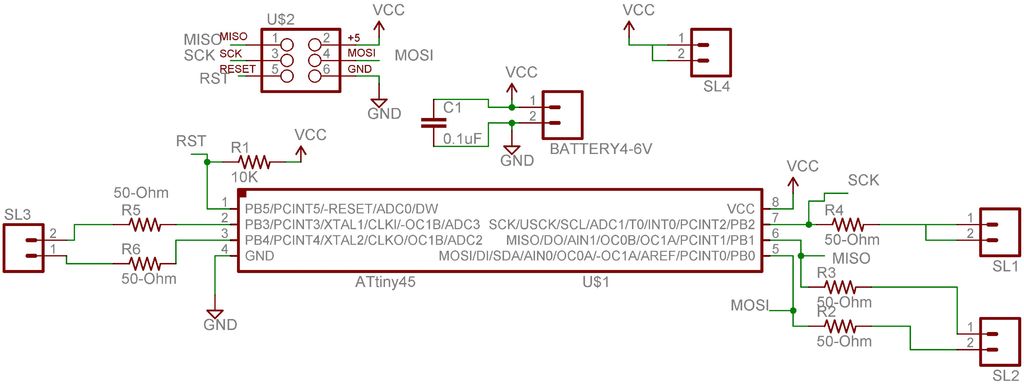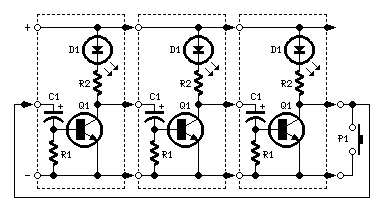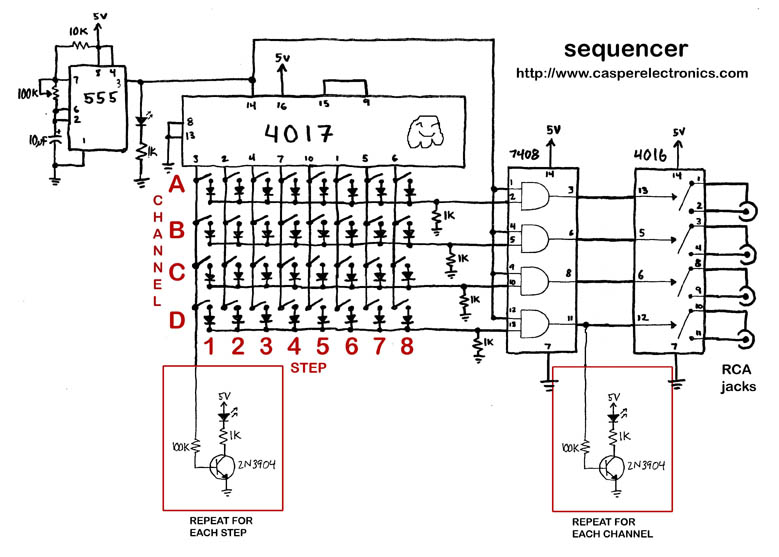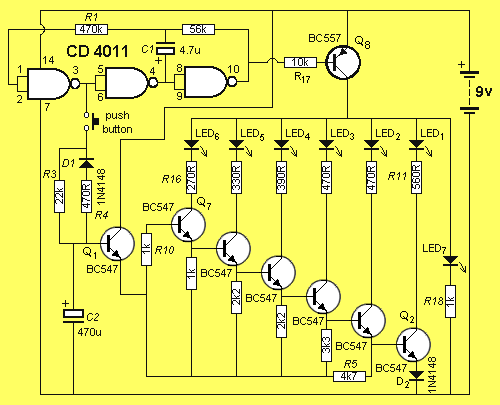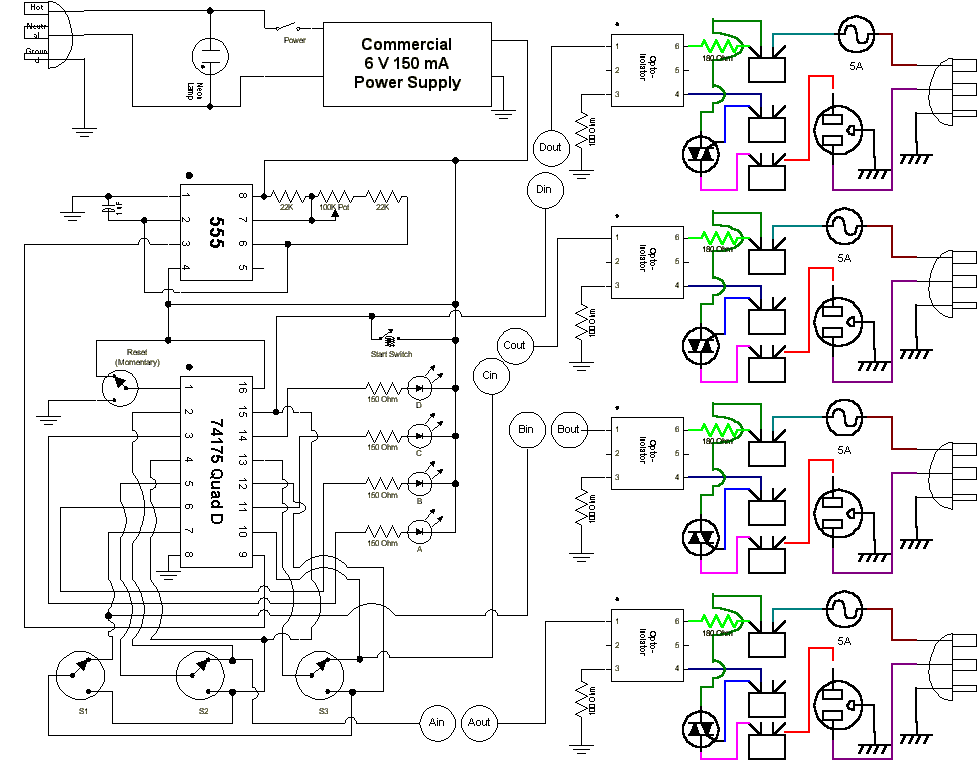
Pseudorandom Simulated Flicker Sequencer
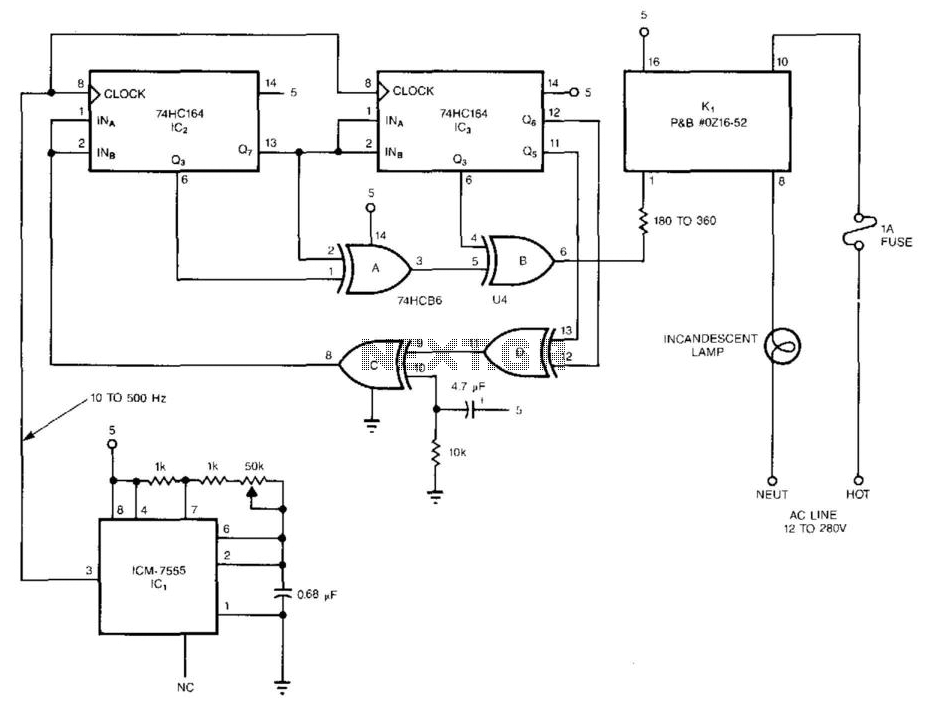
The pseudorandom sequencer drives a solid-state relay. When a low-wattage lamp is powered from the relay, the lamp will flicker like a candle's flame in the wind. Using higher-wattage lamps allows for the simulation of a fireplace or campfire blaze. The effect can be enhanced by utilizing three or more such circuits to power an array of lamps. The circuit consists of an oscillator (IC1) and a 15-stage pseudorandom sequencer (IC2-4). The sequencer generates a serial bit stream that repeats every 32,767 bits. Feedback from stages 14 and 15 of the sequencer is routed through IC4D back to the serial input of IC2. An RC network feeds IC4C, providing a positive pulse to the sequencer to prevent it from being stuck in a zero state at power-up. The remaining XOR gates (IC4A and IC4B) further scramble the output pattern. The serial stream from IC4B drives a solid-state relay that features zero-voltage switching and can manage loads up to 1 A at 12 to 280 Vac.
The described circuit functions as an innovative lighting control system that utilizes a pseudorandom sequencer to create flickering light effects. The primary components include an oscillator and a sequencer, which work in tandem to generate a unique serial bit stream. This bit stream is characterized by a period of 32,767 bits, ensuring a long cycle before the pattern repeats, thus enhancing the unpredictability of the light output.
The feedback mechanism implemented through stages 14 and 15 allows for dynamic adjustment of the sequencer's operation, ensuring that the output remains varied. The integration of the RC network serves a critical role during the power-up phase, delivering a pulse that prevents the sequencer from entering a non-functional state. This design consideration is vital for reliable operation, particularly in environments where power fluctuations may occur.
The XOR gates (IC4A and IC4B) introduce additional complexity to the output pattern, further enhancing the realism of the simulated flame effects. By scrambling the output, these gates contribute to a more natural flickering effect, making the lighting more visually appealing.
The solid-state relay operates with zero-voltage switching, which minimizes electrical noise and enhances the lifespan of both the relay and the connected lighting elements. Capable of handling loads up to 1 A across a wide voltage range (12 to 280 Vac), this relay is suitable for various applications, from decorative lighting to more significant installations. The use of multiple circuits can create a more extensive lighting array, intensifying the effect and providing a versatile solution for ambient lighting needs. The pseudorandom sequencer drives a solid-state relay. If you power a low-wattage lamp from the re lay, the lamp will appear to flicker like a candle"s flame in the wind; using higher-wattage lamps allows you to simulate the blaze of a fireplace or campfire. You can enhance the effect by using three or more such circuits to power an array of lamps. The circuit comprises an oscillator, IC1, and a 15-stage, pseudorandom sequencer, IC2-4. The sequencer produces a serial bit stream that repeats only every 32 767 bits. Feedback from the sequencer"s stages 14 and 15 go through IC4D and back to the serial input of IC2. Notice the RC network that feeds IC4C; the network feeds a positive pulse into the sequencer to ensure that it won"t get stuck with all zeros at power-up.
The leftover XOR gates IC4A and IC4B further scramble the pattern. The serial stream from IC4B drives a solid-state relay that features zero-voltage switching and can handle loads as high as 1 A at 12 to 280 Vac. 🔗 External reference
The described circuit functions as an innovative lighting control system that utilizes a pseudorandom sequencer to create flickering light effects. The primary components include an oscillator and a sequencer, which work in tandem to generate a unique serial bit stream. This bit stream is characterized by a period of 32,767 bits, ensuring a long cycle before the pattern repeats, thus enhancing the unpredictability of the light output.
The feedback mechanism implemented through stages 14 and 15 allows for dynamic adjustment of the sequencer's operation, ensuring that the output remains varied. The integration of the RC network serves a critical role during the power-up phase, delivering a pulse that prevents the sequencer from entering a non-functional state. This design consideration is vital for reliable operation, particularly in environments where power fluctuations may occur.
The XOR gates (IC4A and IC4B) introduce additional complexity to the output pattern, further enhancing the realism of the simulated flame effects. By scrambling the output, these gates contribute to a more natural flickering effect, making the lighting more visually appealing.
The solid-state relay operates with zero-voltage switching, which minimizes electrical noise and enhances the lifespan of both the relay and the connected lighting elements. Capable of handling loads up to 1 A across a wide voltage range (12 to 280 Vac), this relay is suitable for various applications, from decorative lighting to more significant installations. The use of multiple circuits can create a more extensive lighting array, intensifying the effect and providing a versatile solution for ambient lighting needs. The pseudorandom sequencer drives a solid-state relay. If you power a low-wattage lamp from the re lay, the lamp will appear to flicker like a candle"s flame in the wind; using higher-wattage lamps allows you to simulate the blaze of a fireplace or campfire. You can enhance the effect by using three or more such circuits to power an array of lamps. The circuit comprises an oscillator, IC1, and a 15-stage, pseudorandom sequencer, IC2-4. The sequencer produces a serial bit stream that repeats only every 32 767 bits. Feedback from the sequencer"s stages 14 and 15 go through IC4D and back to the serial input of IC2. Notice the RC network that feeds IC4C; the network feeds a positive pulse into the sequencer to ensure that it won"t get stuck with all zeros at power-up.
The leftover XOR gates IC4A and IC4B further scramble the pattern. The serial stream from IC4B drives a solid-state relay that features zero-voltage switching and can handle loads as high as 1 A at 12 to 280 Vac. 🔗 External reference

